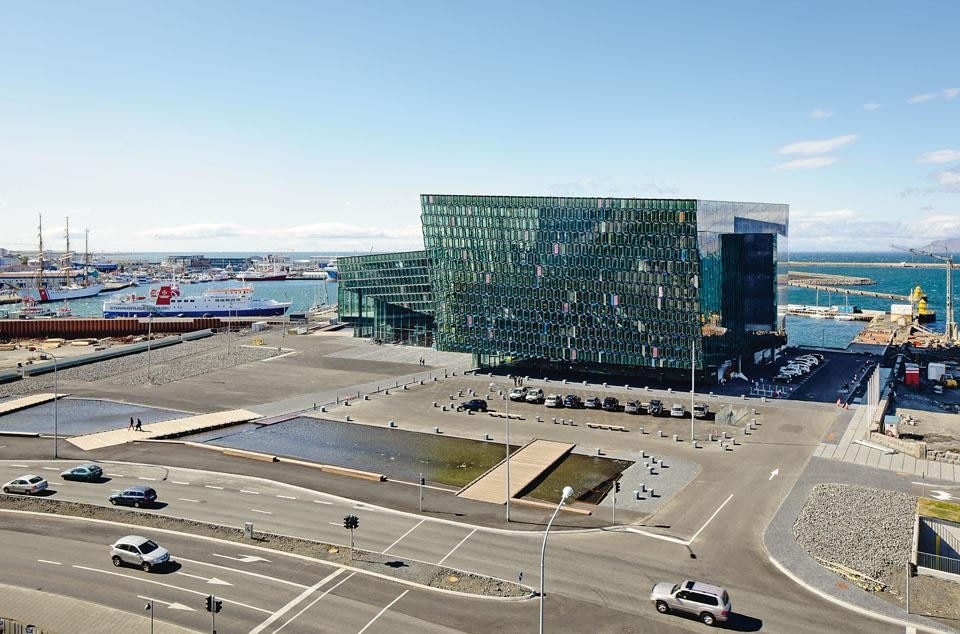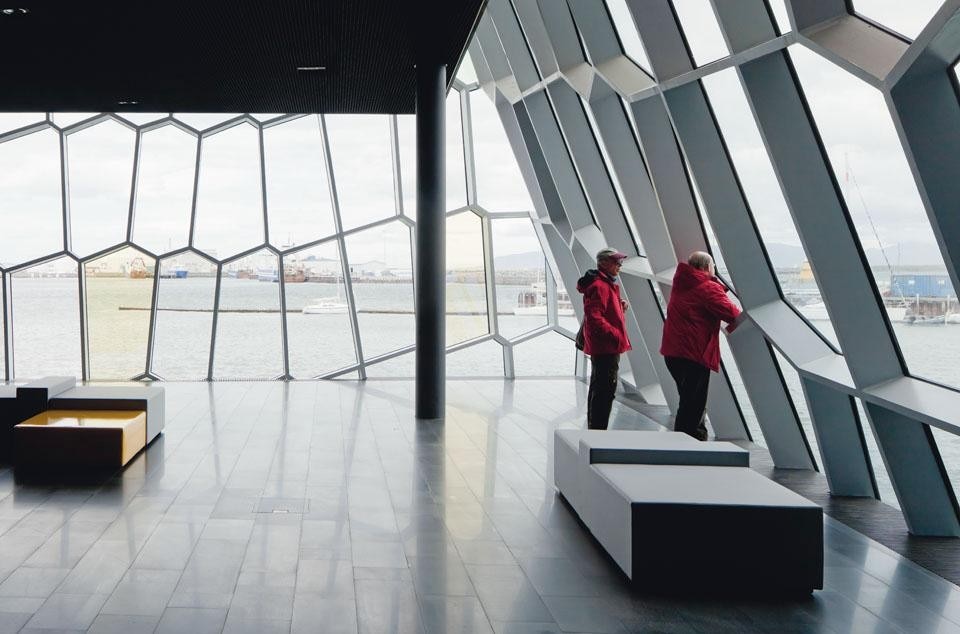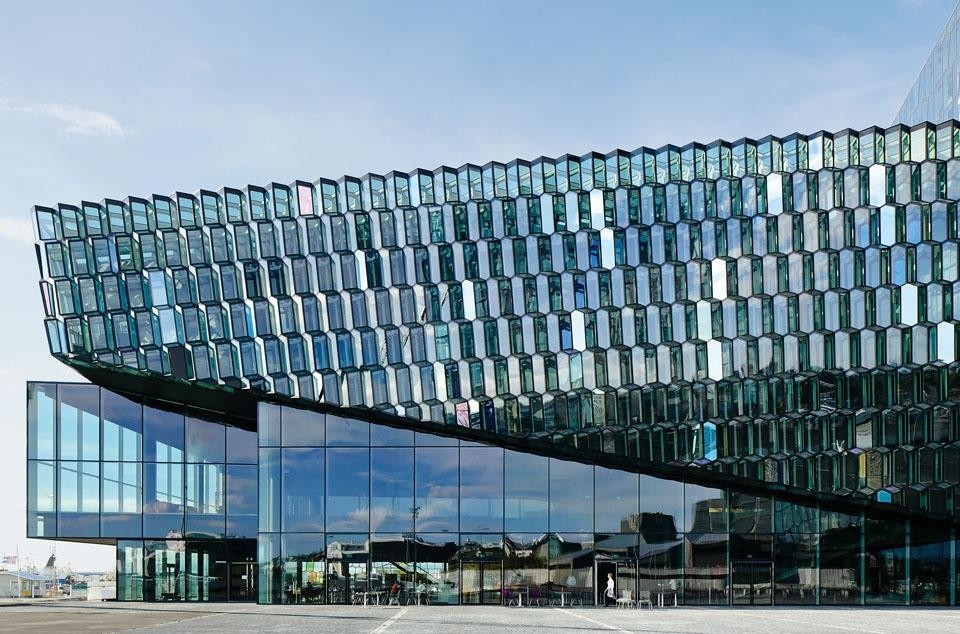Watch the video by Pedro Kok.
Joseph Grima: In recent years, architecture appears to occupy an increasingly prominent position in your output, and recently your latest—and possibly most ambitious—architectural intervention, a collaboration with Henning Larsen Architects for the Harpa Concert Hall, was inaugurated in Reykjavík. Can you tell us about this project? It's obviously irrelevant to attempt categorical distinctions between architecture and art in a project like this, but to what extent do you perceive building and artwork as a unicum?
Olafur Eliasson: I agree that it's not interesting to make distinctions in this case between architecture and artwork. I have a lot of respect for architectural languages because with them you can say things that you can't say with art and vice versa. When we became involved in Reykjavík's Harpa project, the structure of the concert hall had already been defined, but quite early on I suggested that whatever I did, I wanted it to be aesthetically and functionally integrated into the building— for me it was very important not to attach something purely decorative onto something structural. I sat down with my team and we decided that we wanted to create a great facade while also solving the obscuring problem of having columns throughout the thing. We came up with what appears to be a space-filling grid principle, but it is also structurally active. This created a fertile ground for integrating art into the architecture, so that a certain sort of seamlessness started to develop between the two. It isn't always easy to create this close relationship where art and architecture achieve such a degree of integration. It is not seamless simply in terms of where the metal bars meet each other—it's more of an ideological seamlessness.
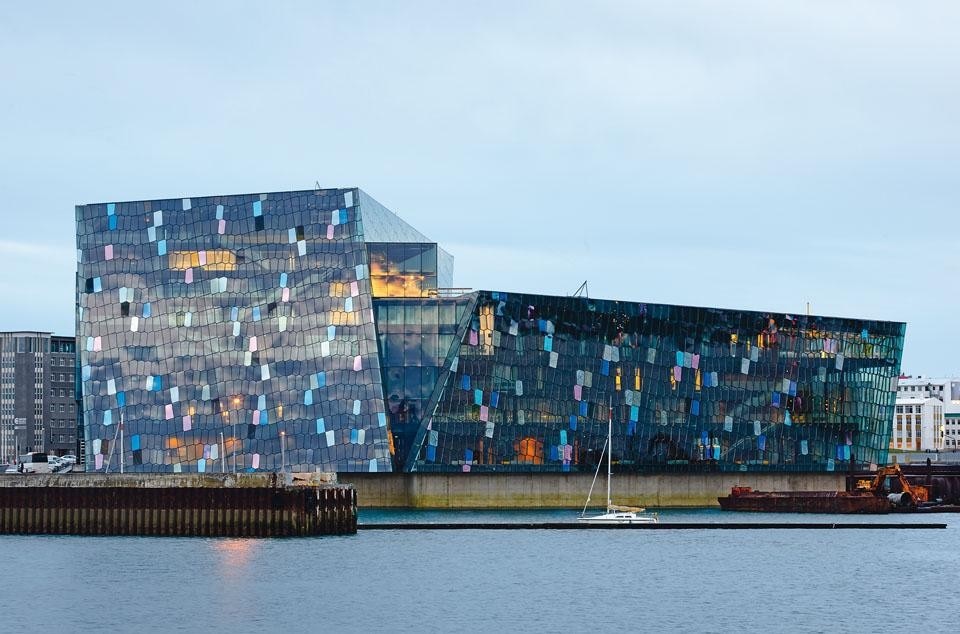
For several years I had been looking into stacking principles and whole space-filling concepts. I was also engaged in more basic polyhedron research, investigating what shapes would geometrically perform, as well as what kind of surfaces and what kind of systems. The original quasi-brick derives from a proportional geometric system related to one big dodecahedron, and this is vaguely visible on the quasi-brick when you see it. In Iceland we had the chance to test it for the first time on the landscape. I envisaged the building as two big blocks of something driven onto land by a big wave. One could almost imagine some kind of rock or other material that, on the south facade, seems to have been broken off from a larger mass. It is here that we see its molecular structure. So the initial idea was more or less for a homogeneous facade system, except on the south facade where it has been sheared.
The evolution of the quasi-brick owes a huge amount to the more fundamental work of Einar Thorsteinn, an Icelandic engineer who is also a mathematician, an artist and a thinker. He studied with Frei Otto and moved to Germany during the building of the Munich stadium before returning to Iceland. When he came back to Germany I was lucky enough to hire him, and he has been here quite consistently since then. He had done a number of experiments, studies and basic work on both polyhedrons Buckminster Fuller's principles. Perhaps most importantly he also worked on crystallographic principles, something he is very devoted to. But he is also involved with idealistic thinking, the more structural and purely engineering principles.

I have worked over the years in the studio on different geometrical principles to develop a new type of brick for construction, an alternative to the curtain-wall facade. The polyhedral brick contains all the necessary functions of a façade within a stackable system and offers a variety of possible geometric structures. The bricks and the way they are connected form a three-dimensional load-bearing structure, which is then refined to optimise the use of material. By saving on material we compensated for a lot of the additional cost of recalculation and redrawing on a number of occasions. The task of working this and into the architecture of the building without compromising the project's ethical message fell to the studio team and the team leader, Sebastian Behmann. This principle was then applied to the building by the architects.
When you refer to Einar's "ethical message", I assume you're referring to his ongoing interest in the work of utopian designers like Fuller and Otto and their belief in architecture's transformative potential.
Fuller was less ideological. He was obsessed with efficiency and making the same for everyone—a modern utopia. What fascinates me about people like Fuller, but also essentially about the early works of Frei Otto and even people like Paolo Soleri in Italy, is that they performed a critique of the modern, even while modern was still highly modern. I wouldn't really call them utopian people in that way, but it interested me how the reinvention of some of the space principles from that time allows us today, or me in the '90s, to come up with spatial geometrical solutions, answers, proposals or even debates which would carry a critique of modern spaces in the spatial performance.
Iceland is rich in unique natural phenomena, such as the crystallised basalt columns, of which the quasi-brick is reminiscent.

I actually think the issue of low cost really became more urgent later, especially when the low cost was combined with climate efficiency. Having grown up in Denmark, I never really viewed the issue of low cost as an ideological vehicle. In the '90s, like many others I was interested in the critique of the modern, which was very much the spirit of the times. Post-modern had passed and the cynical critique that emerged was quite apocalyptic. French figures such as Jean-Luc Nancy influenced my school a great deal. At that time I was interested in the Crystal Chain of Bruno Taut and I looked into expressionistic German architects, into the kaleidoscopic cities of the '20s and the semi-esoteric ones of Rudolf Steiner. I even researched the Russian constructivists, Konstantin Melnikov and people like that. Basically, for me the '90s represented a period of discovery of all these more or less vital people. Einar very much fits into this scheme even though he is different, and today he has a unique standing, as he represents his own people.
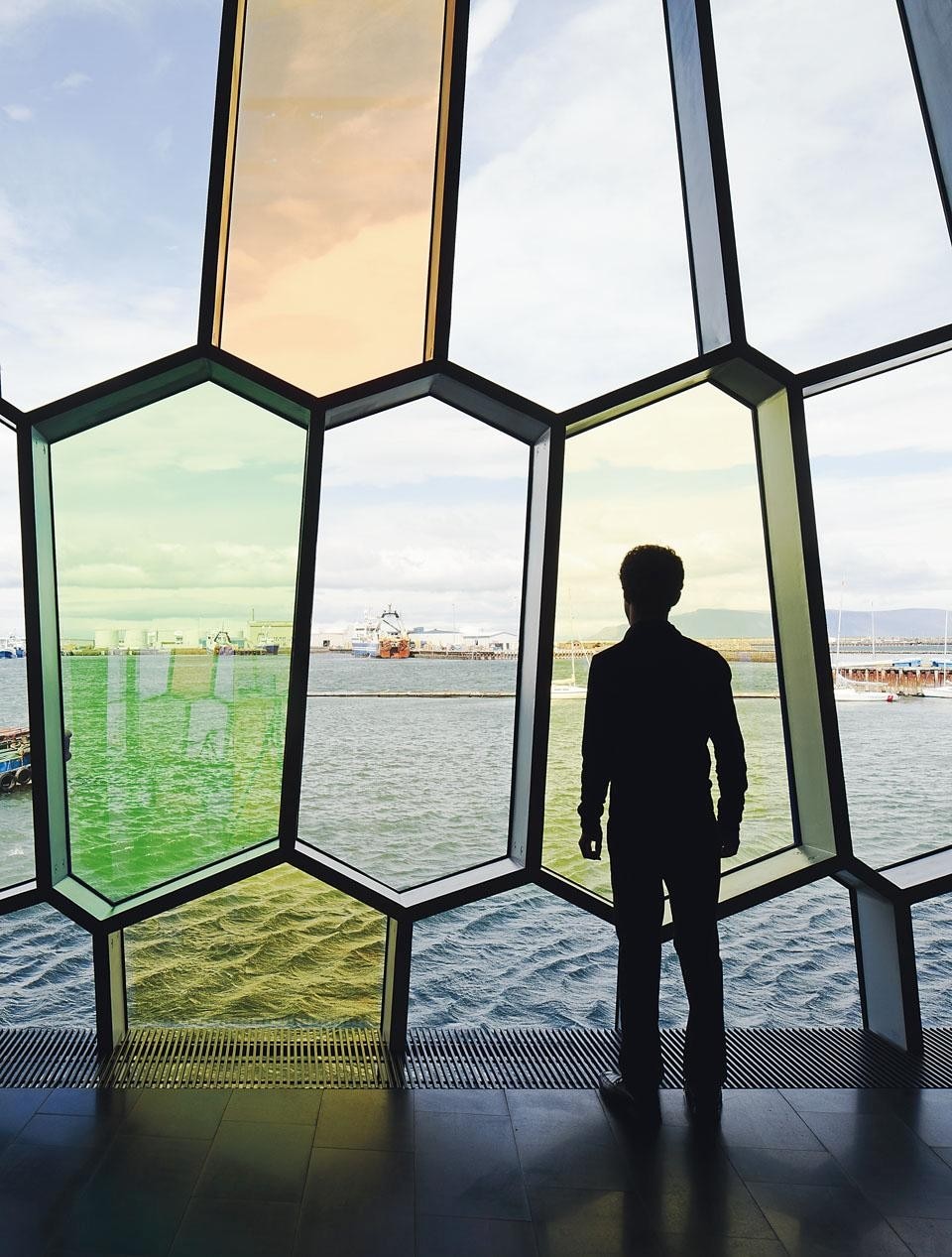
I guess it's best expressed by the concept of the Gesamtkunstwerk. The building and the artwork form a whole that goes beyond the constrained and dogmatic rigour of modernism and the almost apocalyptic fervour of post-modernism.
You're now working on the headquarters for Kirk Kapital in Denmark, a project being developed entirely by your office, as opposed to a collaboration like Harpa. Is this your debut as a full-fledged architecture practice?
Everything we have been doing for the last ten years is somehow related to architecture. The studio's working method is more like a laboratory: we work theoretically but also empirically. We also work specifically with the body, the limbs, how we move, how we dance, how we stand, how we lie down, how we lean, and, funnily enough, these are exercises or experiments that are closely related to art but also closely related to architecture. I guess one can say that there is an overlap between the two; they have different ways of developing permanencies and different relationships to the regulations and codes. The challenge is how to compare and transfer the language from one field to another. There are architects who do address this issue and I certainly think there are many artists who do the same. I have to say—from the bottom of my heart—I don't think the building for Kirk Kapital is not a work of art; it is a big work of art and it just happens to have a form that needs architecture.
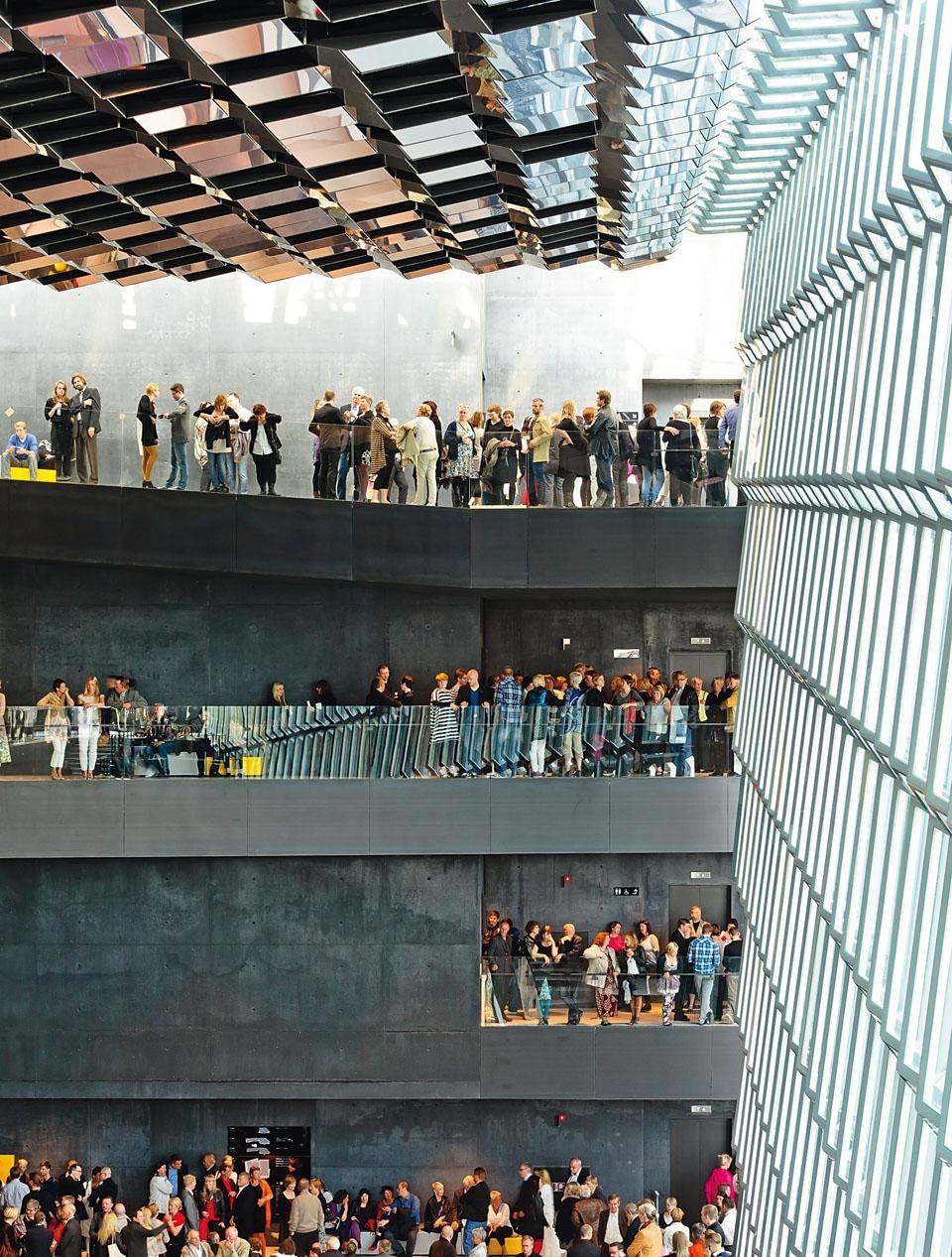
Facade Design Team: Sebastian Behmann, Ben Allen, Einar Thorsteinn
Architects: Henning Larsen Architects A/S, Batteriid Architects Ltd.
Henning Larsen Architects Team: Peer Teglgaard Jeppesen, Ósbjørn Jacobsen, Klavs Holm Madsen, Steen Elsted, Ingela Larsson
Owner and Operator: Harpa, Portus Group, AGO, Totus Contractor: IAV hf., Iceland Prime Contractor Ltd.
Acoustic Design Consultant: Artec Consultants Inc.
Landscape Architects: Landslag efh., Lisbeth Westergaard
Engineers: Artec Consultants, Mannvit Engineers, Hnit Consulting Engineers, Efla Engineers, ArtEngineering GmbH, Ramboll
Other Consultants: ASK Architects, Almenna Consulting Engineers, Verkis Consulting Engineers, Verkhönnun Engineers, Jasper Parrott (International Consultant), Vladimir Ashkenazy (Artistic Advisor)
Total Floor Area: 28,000 m2
Cost: approx. $150,000,000
Construction Phase: 2007–2011
